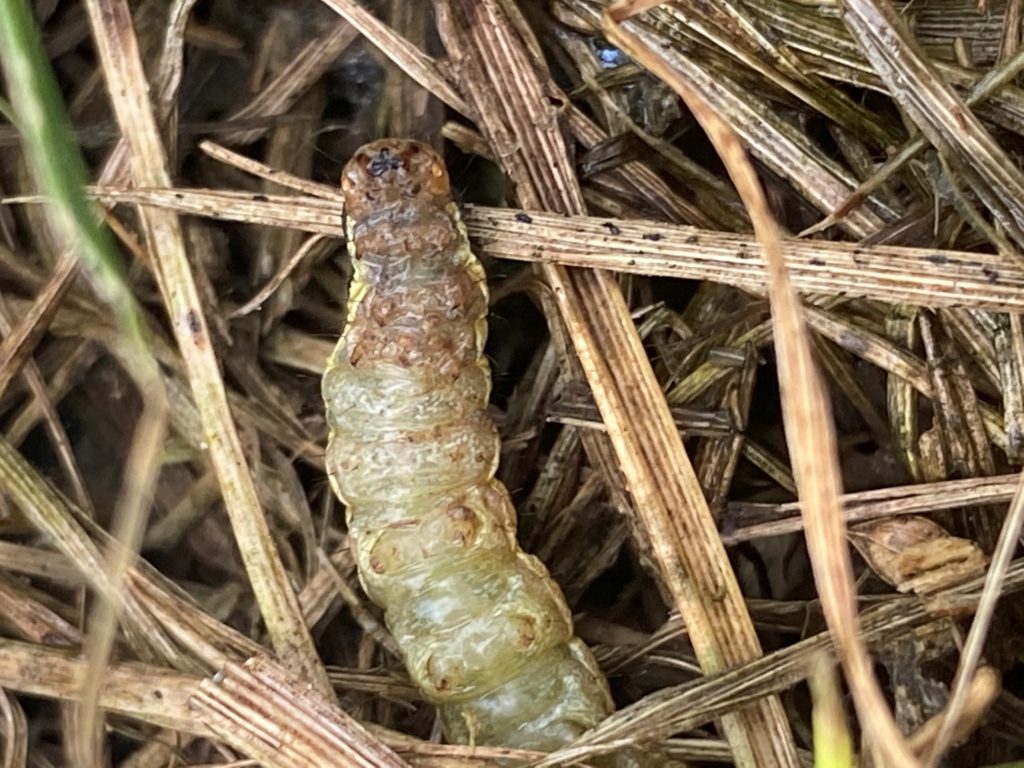Control of Armyworms
Control in Lawns
| Active Ingredient | Trade Name(s) | Notes |
|---|---|---|
| Chlorantraniliprole | GrubEx 1 | Granular; Water into the soil. |
| Spinosad | Conserve SC | Don’t water into the soil. |
For more information about reestablishing damaged lawns, review the publications linked here.
Control in Pastures
| Active Ingredient | Trade Name(s) | Grazing and Harvest Restrictions | Notes |
|---|---|---|---|
| Chlorantraniliprole | Prevathon | 0-day application restriction for forage or hay. | Good control & up to 14 days residual. |
| Chlorantraniliprole | Vantacor | The Preharvest interval is 0 days. The field re-entry interval is 4 hours | |
| Chlorantraniliprole | Besiege | Do not apply within seven days of harvest; 0-day application restriction for grazing. | |
| Methoxyfenozide | Intrepid 2F | Do not apply within seven days of harvest; 0-day application restriction for grazing. | 4 oz is the minimum labeled rate and probably enough. Expect residual around between 7-10 days. There are generic options. |
| Carbaryl | Sevin XLR Plus 4 | Must remove cattle. Do not apply within 14 days of harvest or grazing. | Even at the minimum rates is more expensive than other options and won’t be as effective. |
For more information about reestablishing damaged pastures, visit the UT Forage Center Website.
Precautionary Statement
To protect people and the environment, pesticides should be used safely. This is everyone’s responsibility, especially the user. Read and follow label directions carefully before you buy, mix, apply, store or dispose of a pesticide. According to laws regulating pesticides, they must be used only as directed by the label and registered for use in your state.
Disclaimer
This page contains pesticide recommendations that are subject to change at any time. The recommendations in this publication are provided only as a guide. It is always the pesticide
applicator’s responsibility, by law, to read and follow all current label directions for the specific pesticide being used. The label always takes precedence over the recommendations found in this publication. Use of trade or brand names in this publication is for clarity and information; it does not imply approval of the product to the exclusion of others that may be of similar, suitable composition, nor does it guarantee or warrant the standard of the product. The author(s), the University of Tennessee Institute of Agriculture, and University of Tennessee Extension assume no liability resulting from the use of these recommendations.


